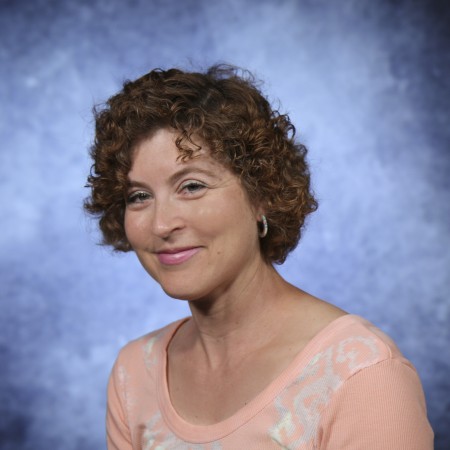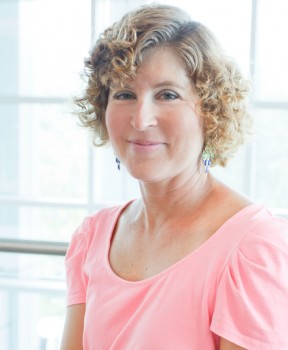Ph.D. - Computational and Applied Mathematics
Rice University - 1995

Susan Minkoff
Professor - Mathematical Sciences
Affiliated Professor, Geosciences Department
Affiliated Professor, Science/Mathematics Education Department
Professional Preparation
M.A. - Computational and Applied Mathematics
Rice University - 1993
Rice University - 1993
B.S. - Mathematics and Computer Science
Duke University - 1986
Duke University - 1986
Research Areas
Research Interests
My general research area is scientific computing with primary emphasis to date on numerical modeling for geoscience problems (seismic imaging and wave propagation, reservoir simulation, and mechanical deformation modeling). Mainly I enjoy using mathematics and numerical simulation to model the "real-world" as closely as possible given limitations in physics, mathematics, and computer science. These studies tend to be data driven. Scientific computing balances applied mathematics, engineering, and computer science, using tools from all three subject areas to address physical problems of interest to applications scientists. I have broad interests that include not only earth science, but almost all physical, chemical, and biological problems that can benefit from the skills and insights of an applied mathematician. More recently I have been studying uncertainty quantification and data science including Bayesian seismic inversion (sometimes using neural nets) and reduced order modeling for couple multiphysics simulations.Publications
Symes, W.W., Chen, H., and Minkoff, S. E., "Solution of an Acoustic Transmission Inverse Problem by Extended Inversion," Inverse Problems, pp. 1-36, to appear 2022 - publications
Use of extended source inversion for estimating the noise level in seismic data. 2022 - conference publication
An Improved Seismic Data Completion Algorithm using Low-Rank Tensor Optimization: Cost Reduction and Optimal Data Orientation. 2021 - journal article
Popa, J., Minkoff, S. E., and Lou, Y., “Improving Seismic Data Completion via Low-Rank Tensor Optimization,” Proceedings of the 90th Annual International Meeting of the Society of Exploration Geophysicists, (Houston, TX.), pp. 2774-2778, 2020 - publications
Symes, W. W., Chen, H., and Minkoff, S. E., “Full Waveform Inversion by Source Extension: Why it Works,” Proceedings of the 90th Annual International Meeting of the Society of Exploration Geophysicists, (Houston, TX.), pp. 765-769, 2020 - publications
Safin, A., Zweck, J., and Minkoff, S. E., “A One-Way Coupled Model for the Vibration of Tuning Fork-Based Trace Gas Sensors Driven by a Thermoacoustic Wave,” Applied Physics B: Lasers and Optics, Vol. 126, No. 2, p. 29:DOI:10.1007/s00340-020-7376-8020, 2020 - publications
Stuart, G. K., Minkoff, S. E., and Pereira, F., “A Two-Stage Markov Chain Monte Carlo Method for Seismic Inversion and Uncertainty Quantification,” Geophysics, Vol. 84, No. 6, pp. R1015-R1032, 2019 - publications
Appointments
Secretary
Society for Industrial and Applied Mathematics (SIAM) [2020–2023]
Society for Industrial and Applied Mathematics (SIAM) [2020–2023]
Additional Information
CV
https://personal.utdallas.edu/~sminkoff/save_papers/Minkoff_cv_2022.pdfHonors and Awards
- 2004 Honorable Mention for Best Paper: Geophysics
- 1999 Outstanding Reviewer: Geophysics
- 1996 The Robert Lowrey Patten Service Award, Rice University
- 1993 The Graduate Student Association Service Award, Rice University
- 1985 Phi Beta Kappa, Duke University
News Articles
Mathematician Helps Reveal Mysteries Beneath Earths Surface
 The region below the surface of the Earth is a complicated place, with layers of rock, fluids and different types of soil that all behave in unique ways. So when energy companies need to drill through that subsurface to get to oil and gas deposits, they naturally rely on the expertise of geoscientists to help safely and efficiently navigate the underground terrain. But they also need mathematicians like Dr. Susan Minkoff. “My training is in mathematics, but I’m very interested in real-word problems in geosciences and other areas, such as optics,” said Minkoff, who recently joined the UT Dallas faculty as a professor in the Department of Mathematical Sciences. Minkoff uses complex equations to create mathematical models that describe various types of physical phenomena, such as how seismic waves and fluids travel through the Earth. Her research has applications in the oil and gas industry, where an understanding of the layout and behavior of subsurface regions is critical.
The region below the surface of the Earth is a complicated place, with layers of rock, fluids and different types of soil that all behave in unique ways. So when energy companies need to drill through that subsurface to get to oil and gas deposits, they naturally rely on the expertise of geoscientists to help safely and efficiently navigate the underground terrain. But they also need mathematicians like Dr. Susan Minkoff. “My training is in mathematics, but I’m very interested in real-word problems in geosciences and other areas, such as optics,” said Minkoff, who recently joined the UT Dallas faculty as a professor in the Department of Mathematical Sciences. Minkoff uses complex equations to create mathematical models that describe various types of physical phenomena, such as how seismic waves and fluids travel through the Earth. Her research has applications in the oil and gas industry, where an understanding of the layout and behavior of subsurface regions is critical.